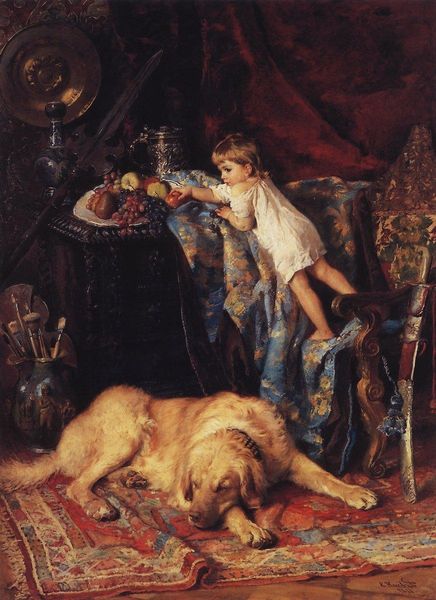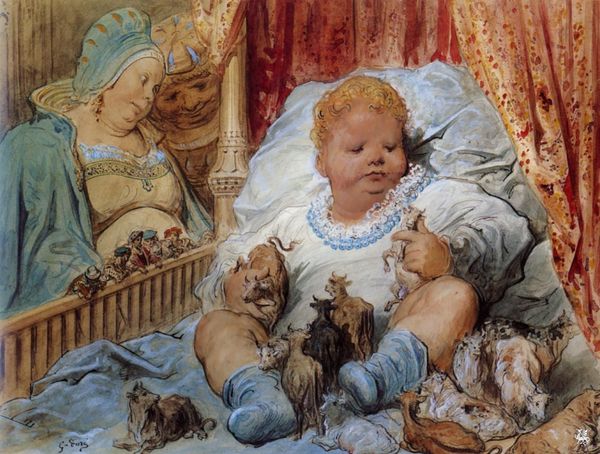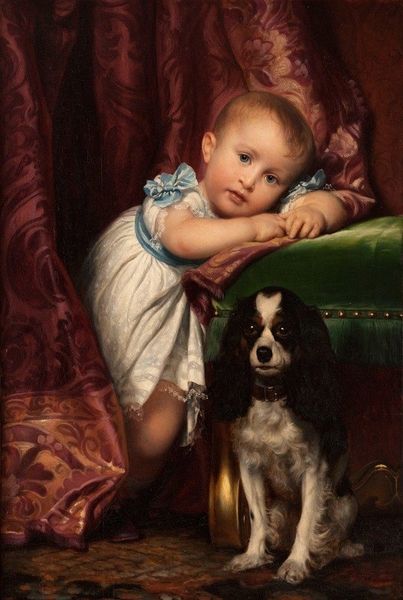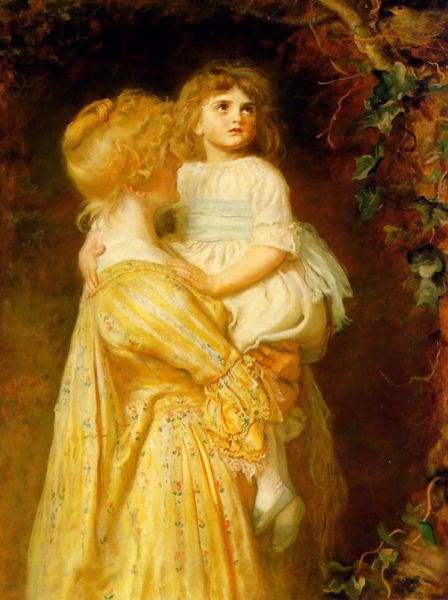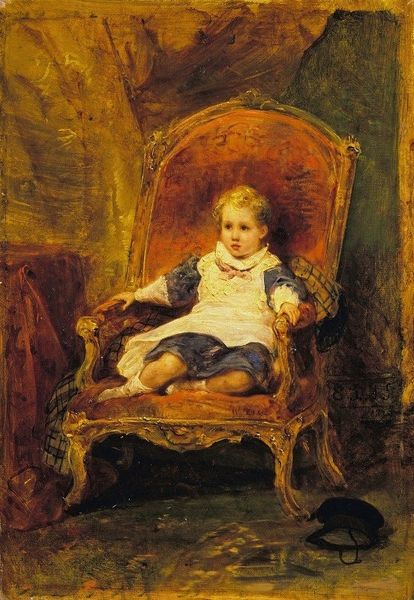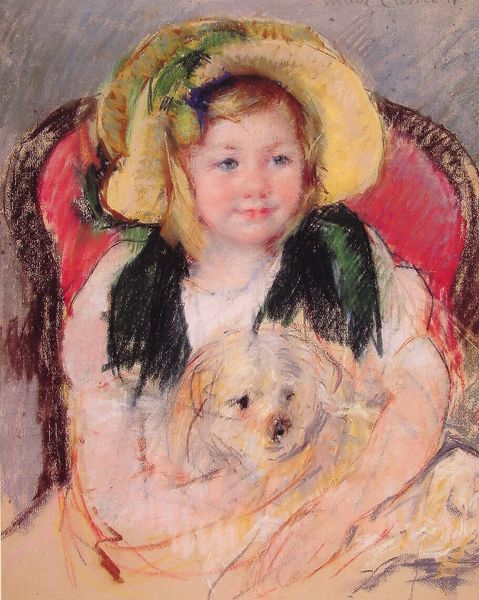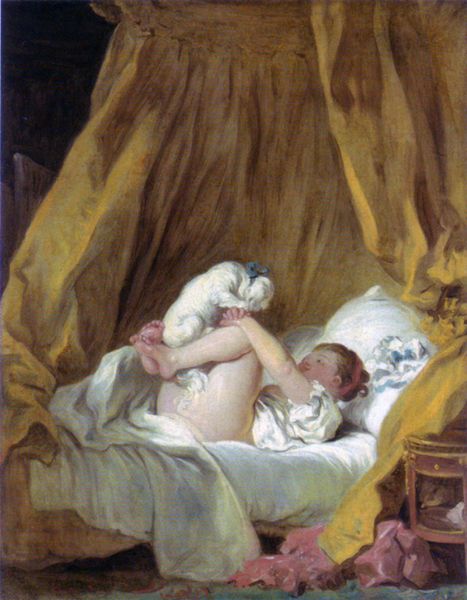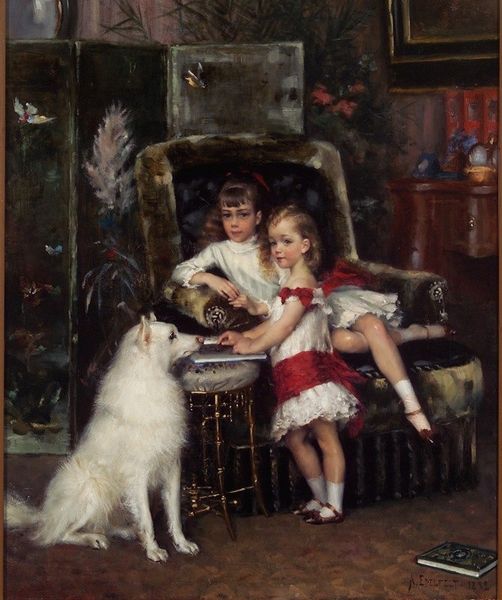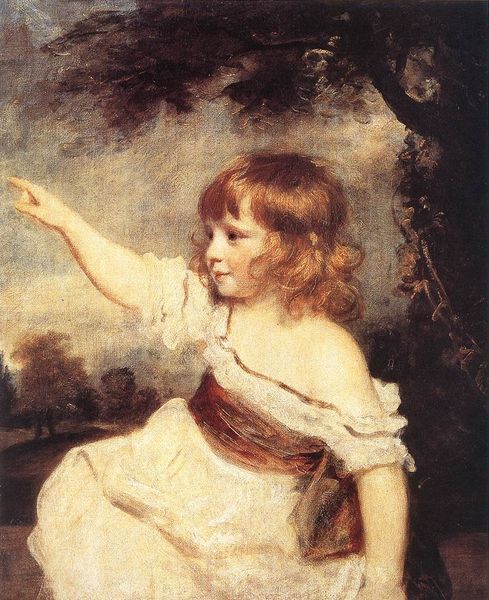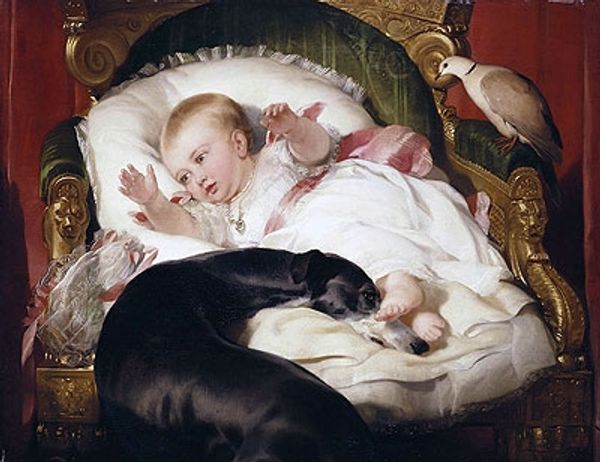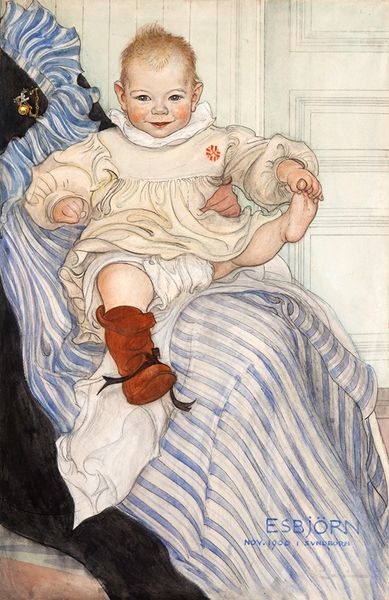
watercolor
#
portrait
#
gouache
#
impressionism
#
figuration
#
watercolor
#
genre-painting
#
realism
Copyright: Public domain
Editor: Here we have "A Portrait of a Christian De Falbe" by Anders Zorn, seemingly done in watercolor and gouache. The young child lounges regally, with this massive dog watching over him. I’m immediately struck by the opulence of the scene; the textiles and even the child's clothing seem almost ridiculously extravagant. What is your read on this painting? Curator: The opulence you mention is absolutely key. I read this portrait through a lens of class and privilege. Zorn was a master at depicting the *bourgeoisie*, and here, the child becomes an almost theatrical display of wealth. Note the red sash: are we meant to understand it as a mark of nobility? Editor: It certainly looks that way. But how complicit is Zorn being here? Is he celebrating or critiquing? Curator: That’s the central tension. The very act of painting such a portrait reinforces the social hierarchy. Zorn’s choice to render it with such painterly bravado – the loose brushstrokes, the almost dizzying patterns of gold – can be interpreted as both admiring and subtly mocking. He almost overwhelms the viewer. What does the child's pose evoke for you? Does he seem active and full of youthful possibility? Editor: Not at all. There is something almost inanimate about him. His eyes seem distant. Almost like another possession. The dog somehow seems more alive. Curator: Precisely. By drawing parallels to this beloved animal, perhaps Zorn subtly questioned this system and the burden that the very wealthy faced. Editor: I never thought of portraits as having so much layered meaning beyond just documenting someone’s appearance. Curator: Absolutely! Every brushstroke tells a story steeped in the socio-political currents of its time. Analyzing paintings in the intersection between status, wealth, and identity makes art history profoundly relevant.
Comments
No comments
Be the first to comment and join the conversation on the ultimate creative platform.
